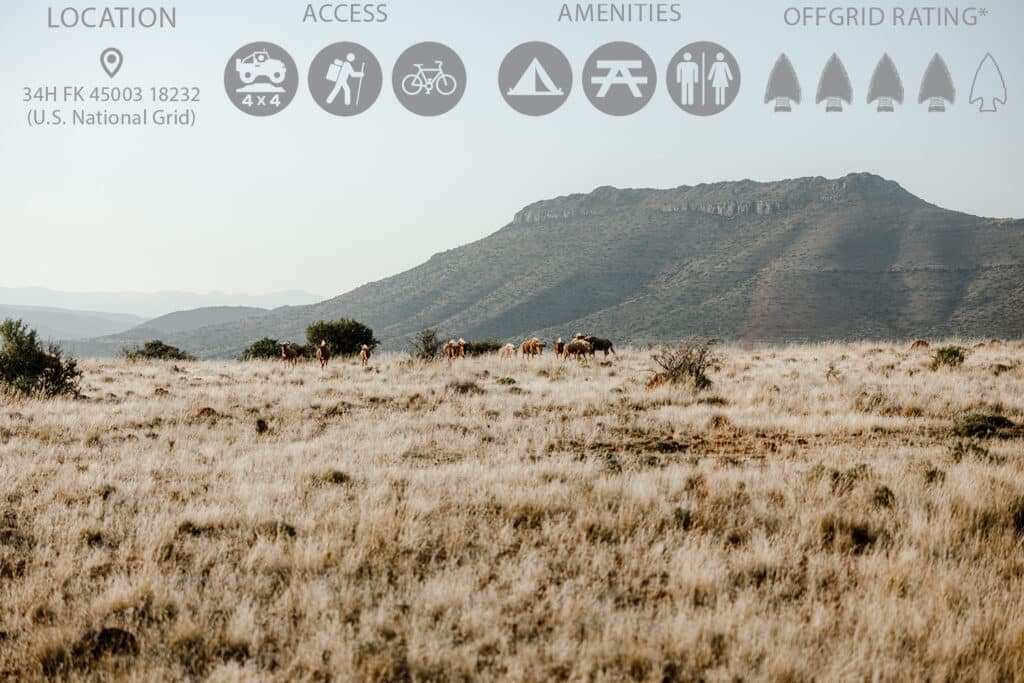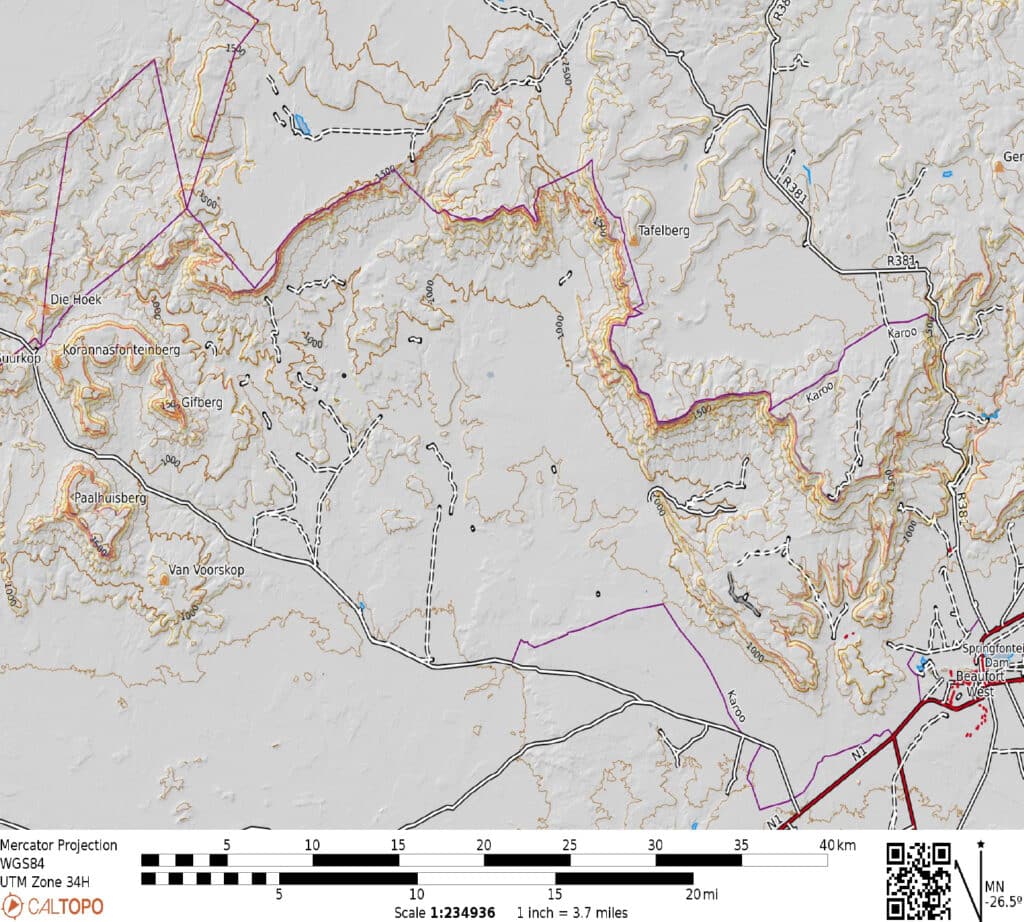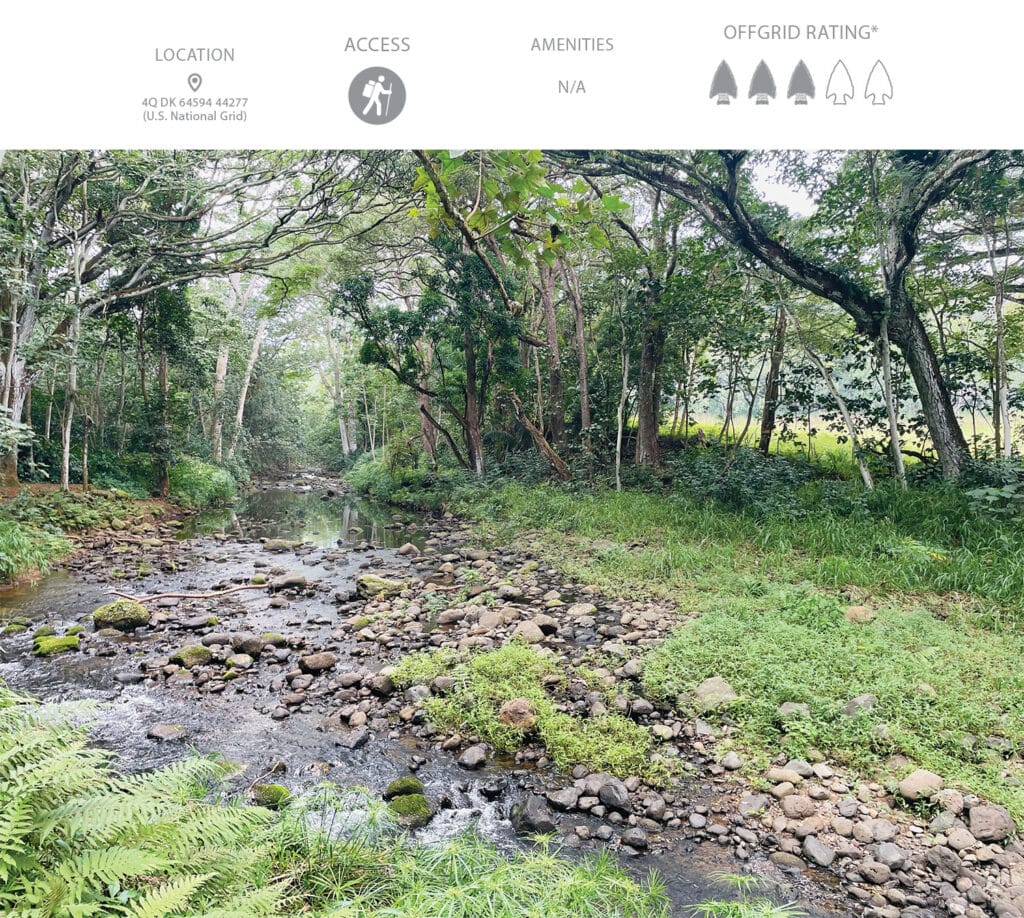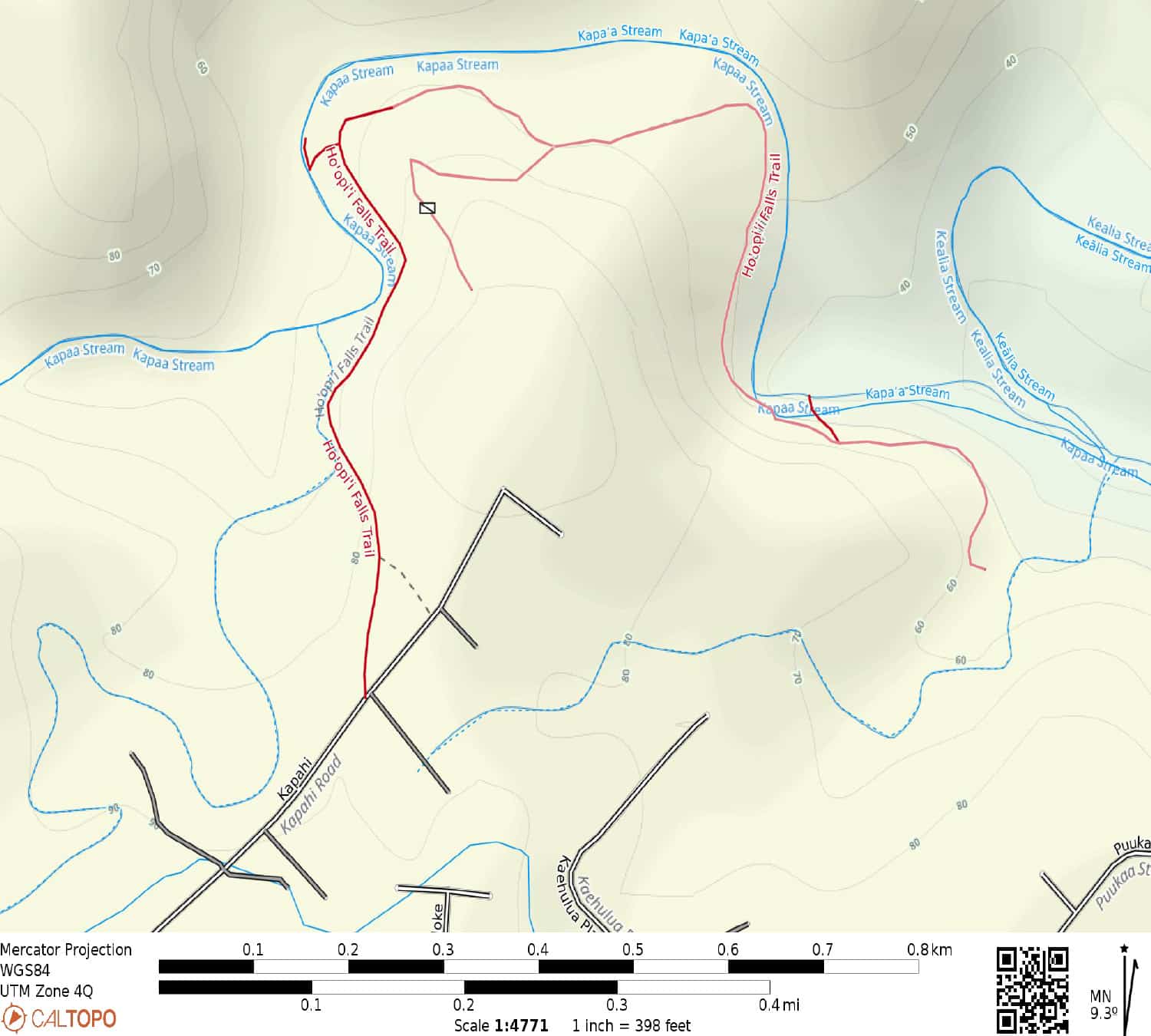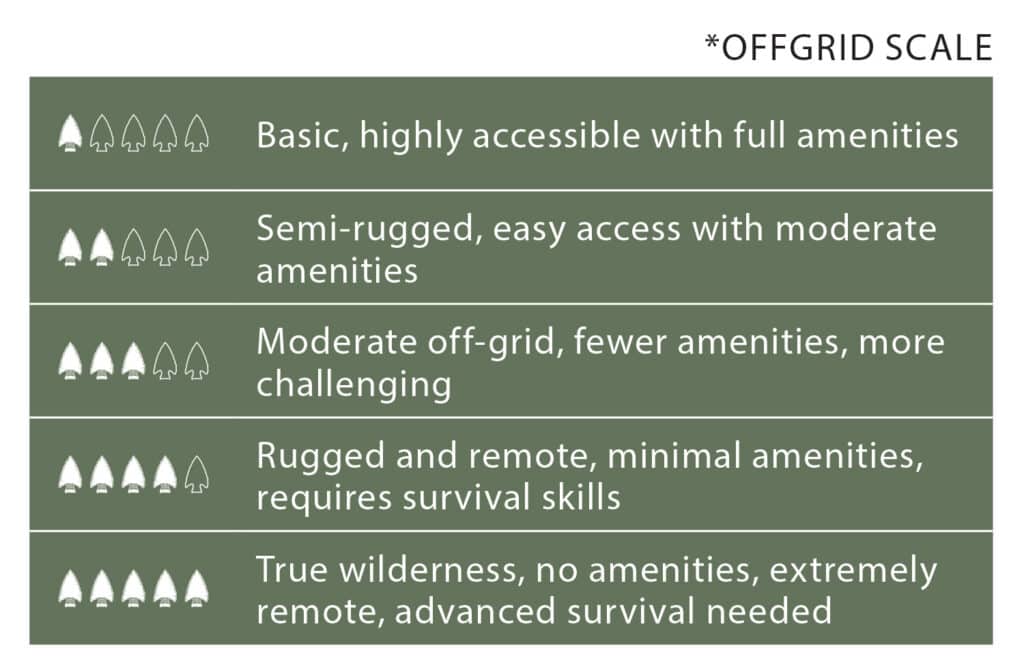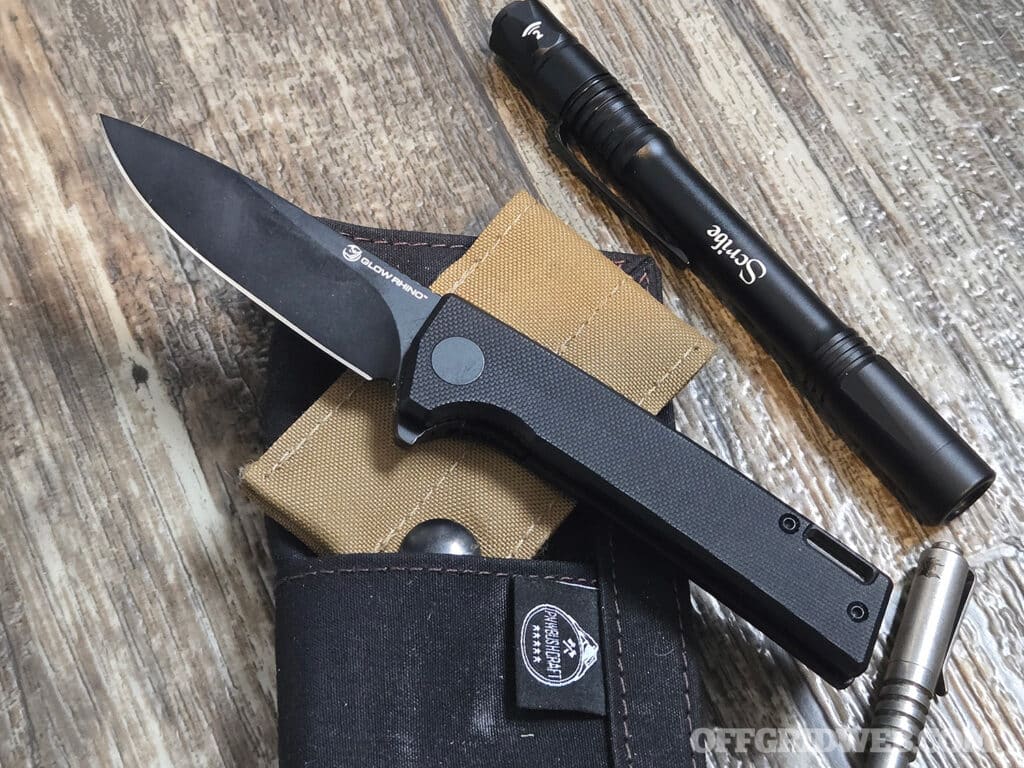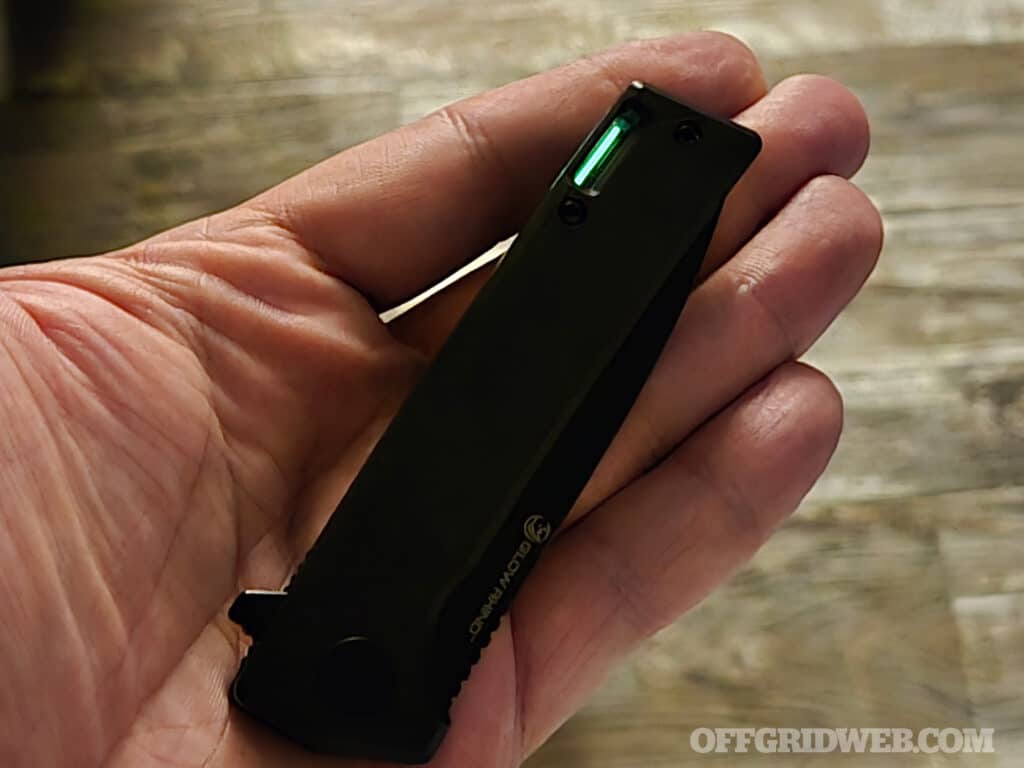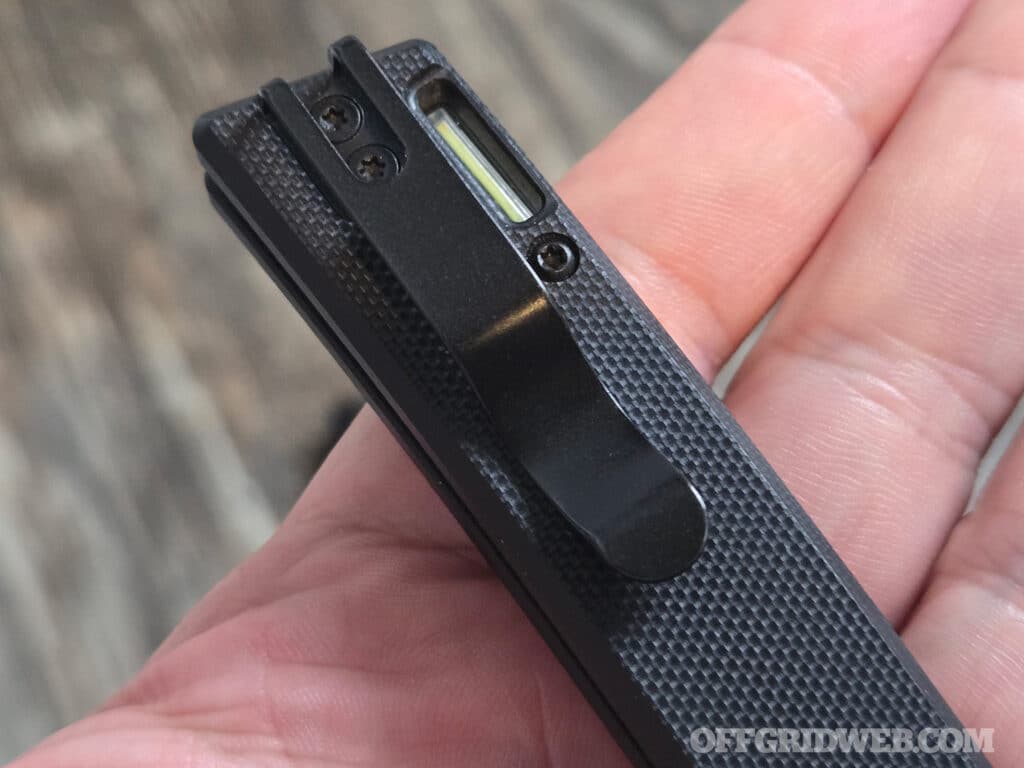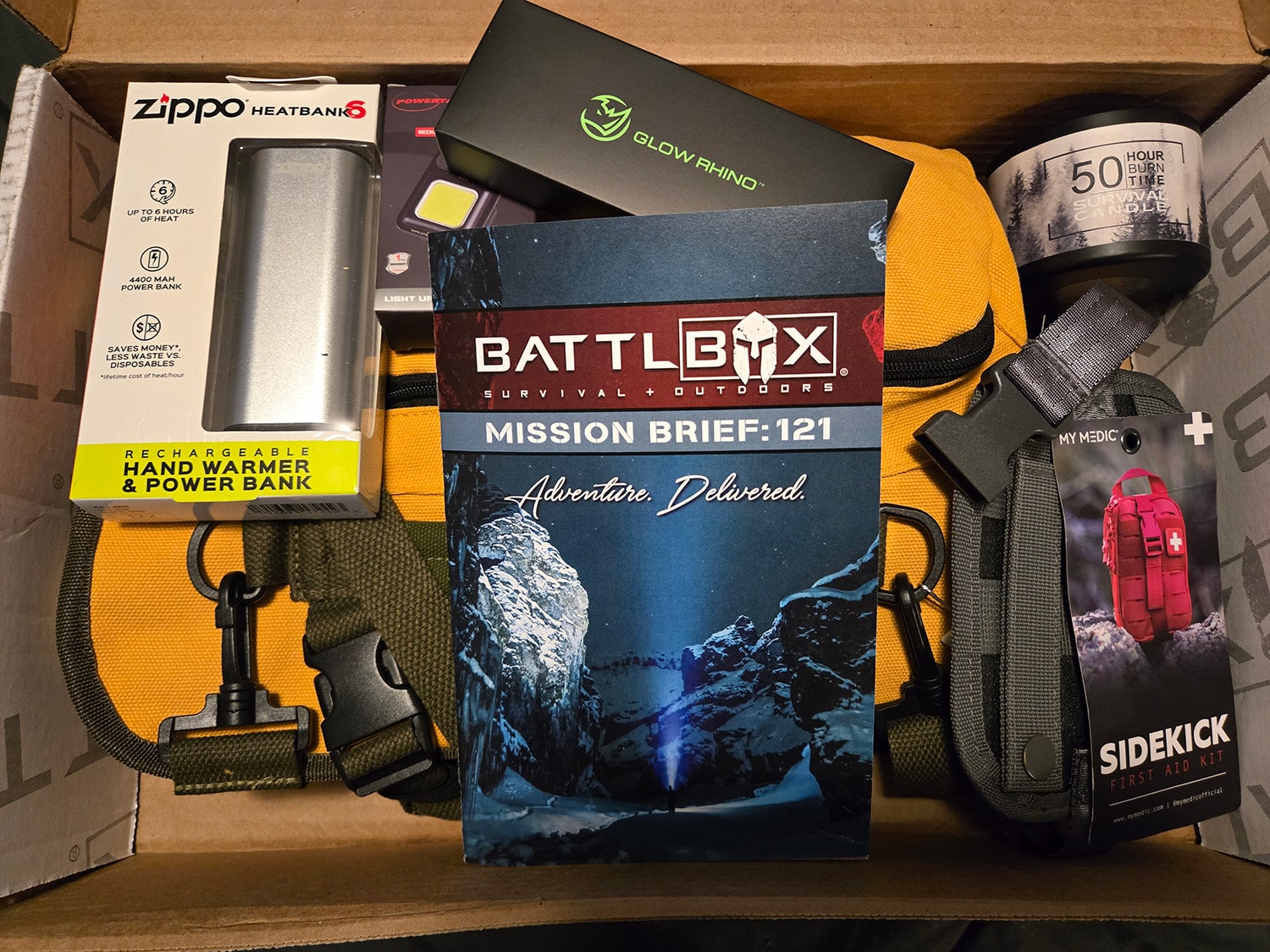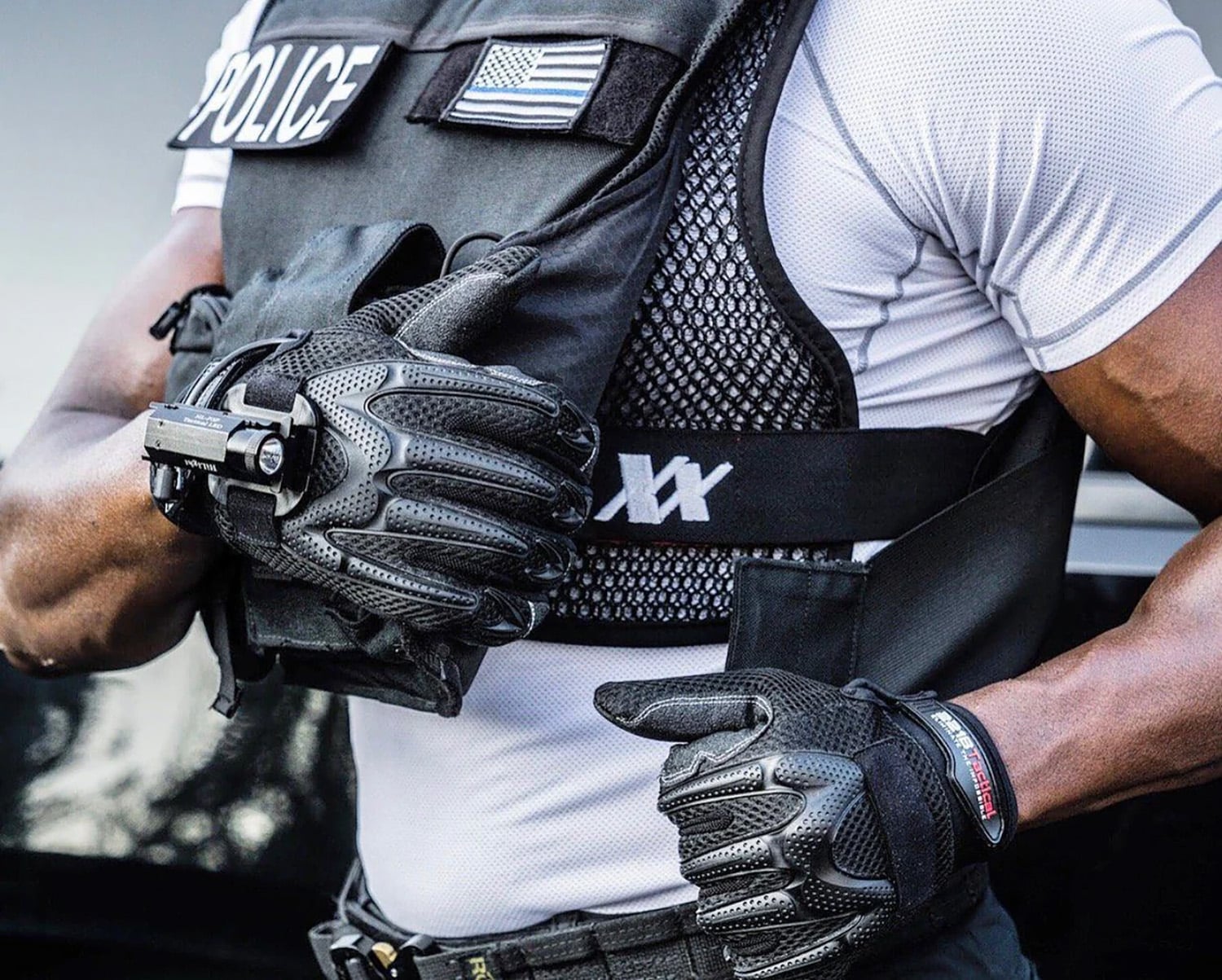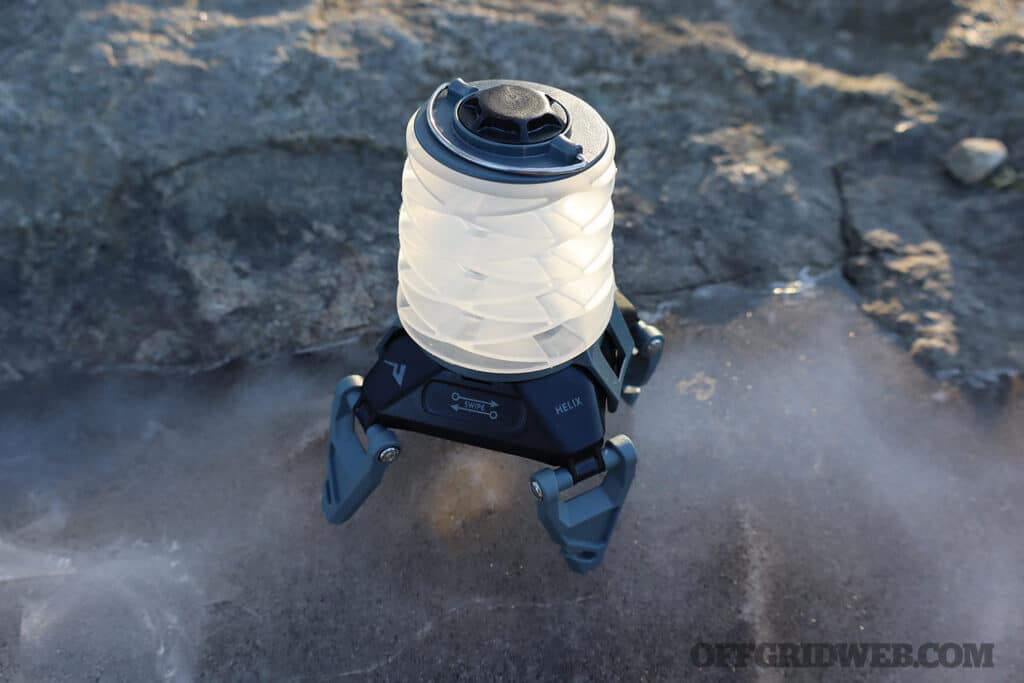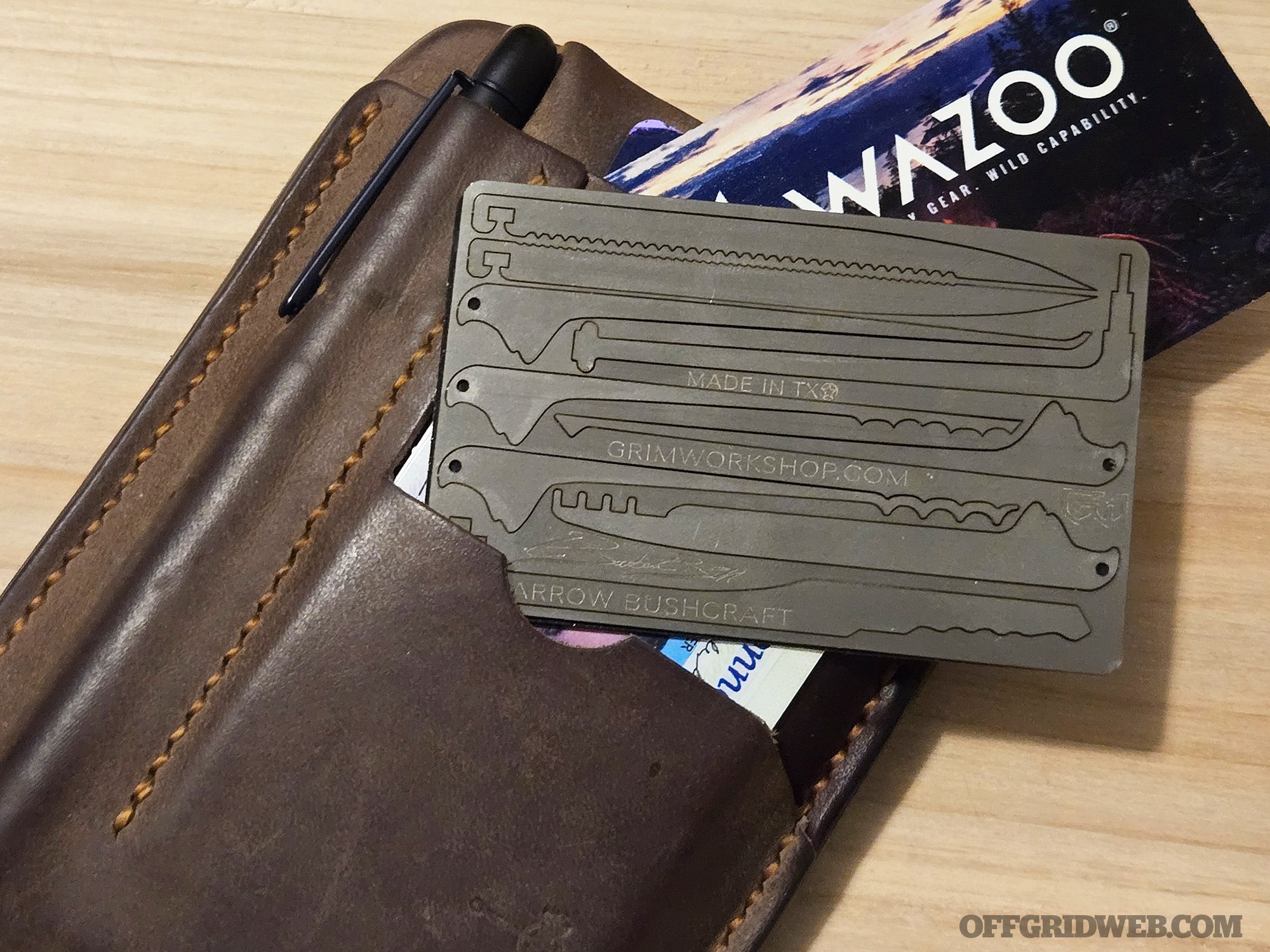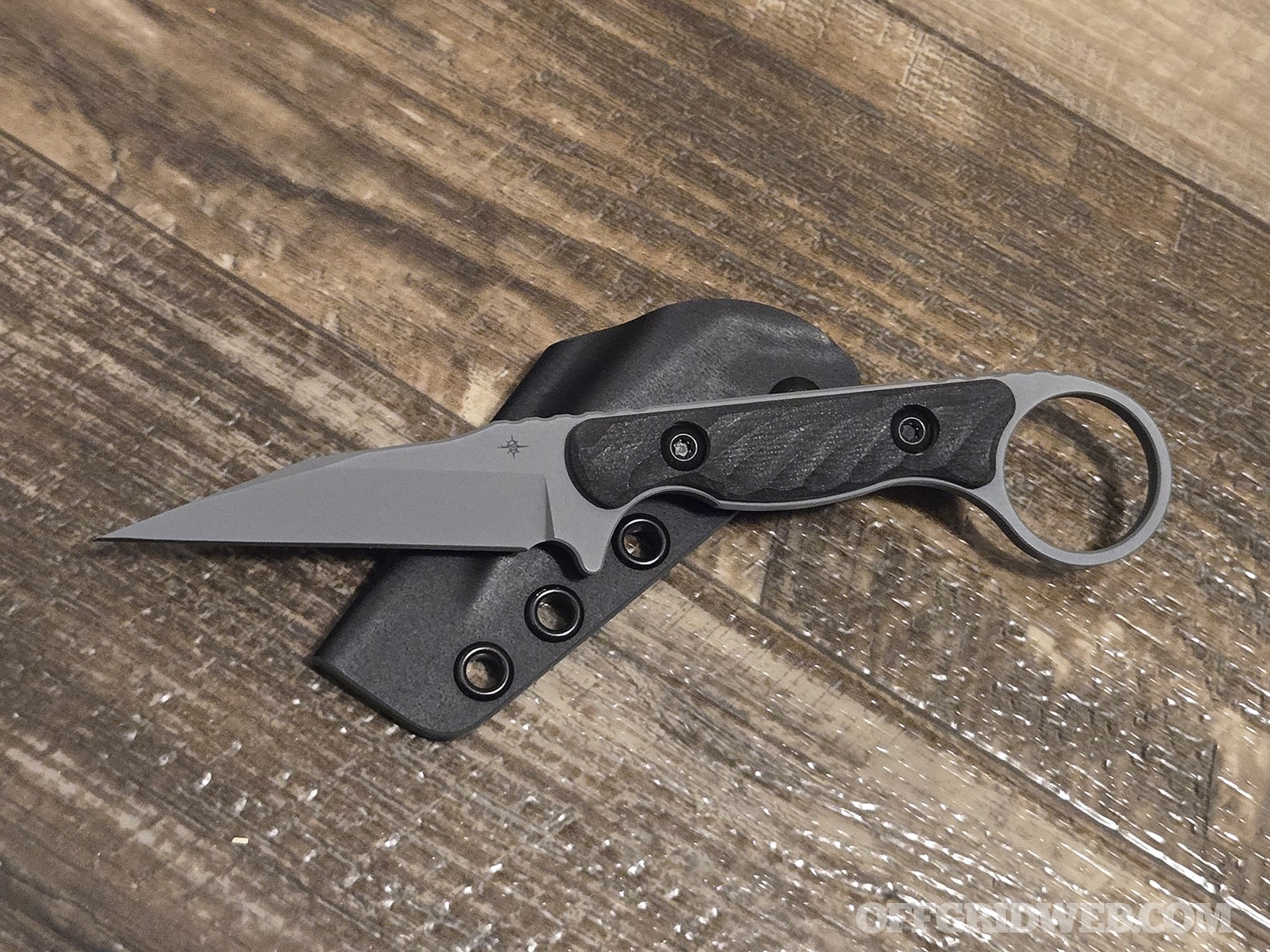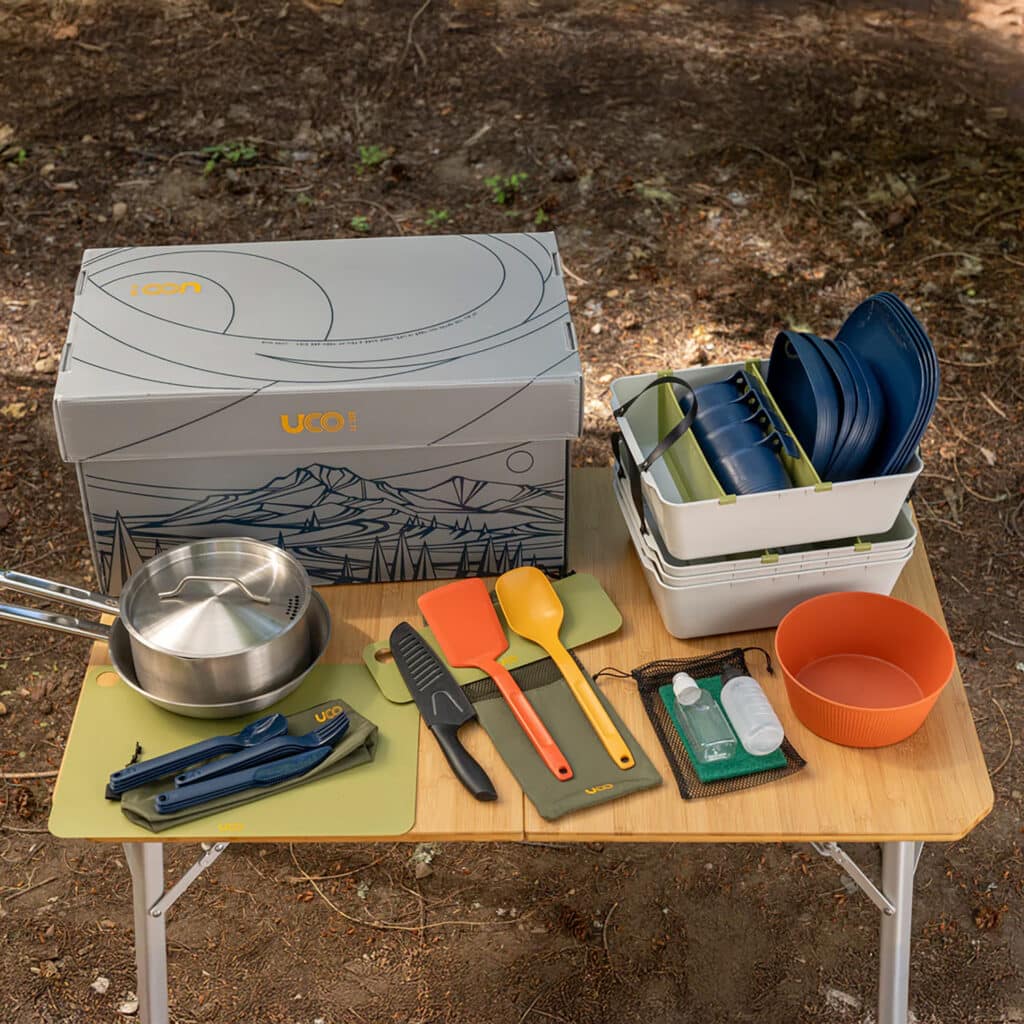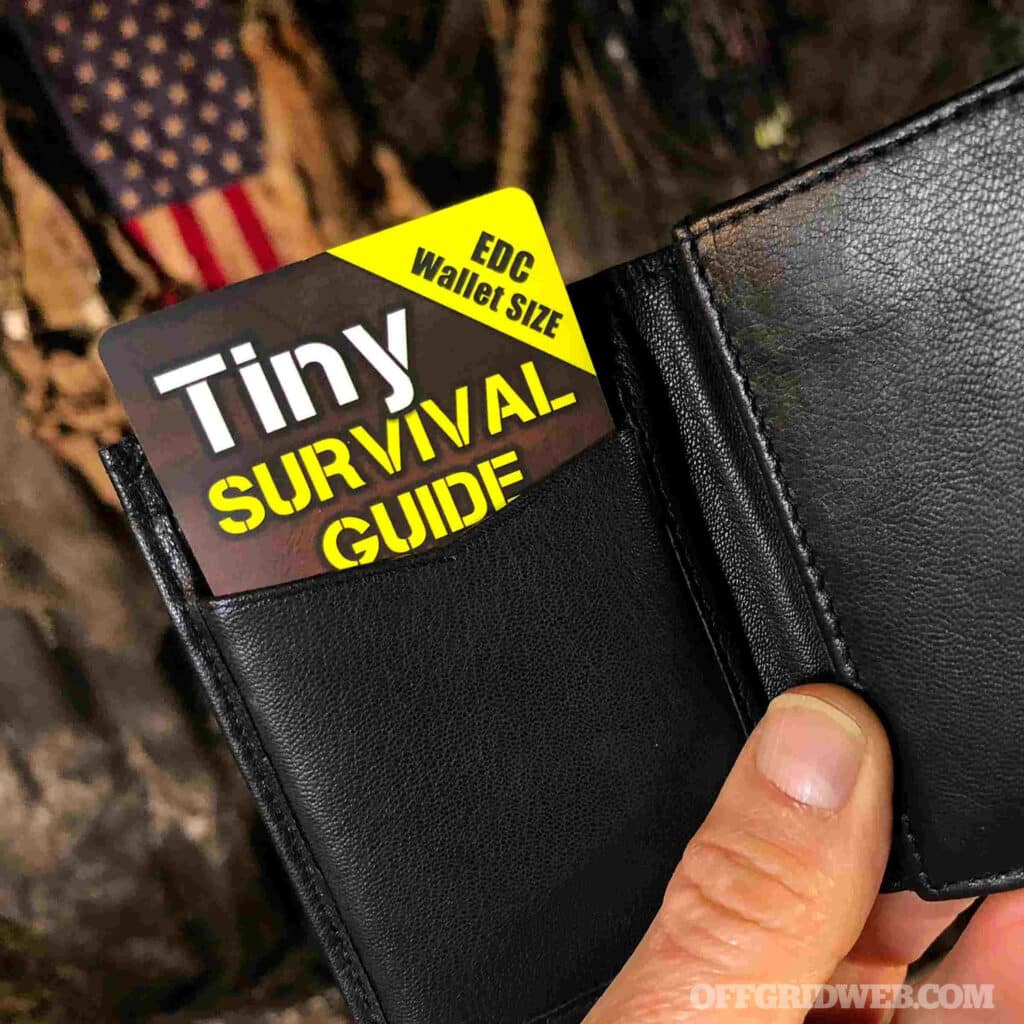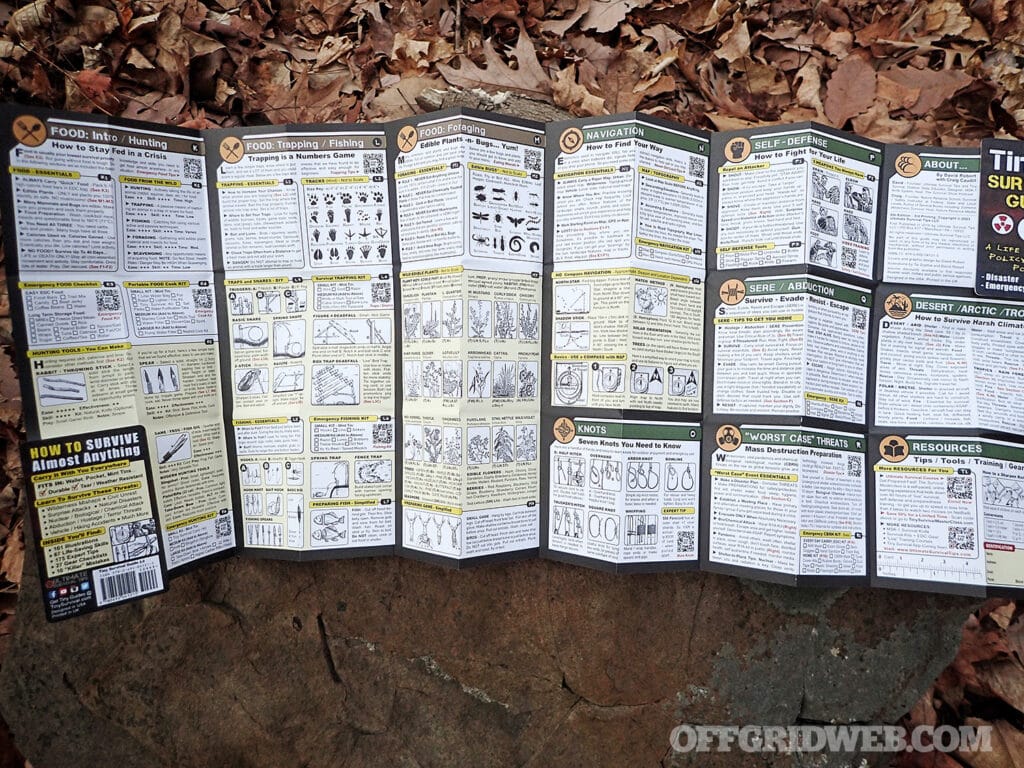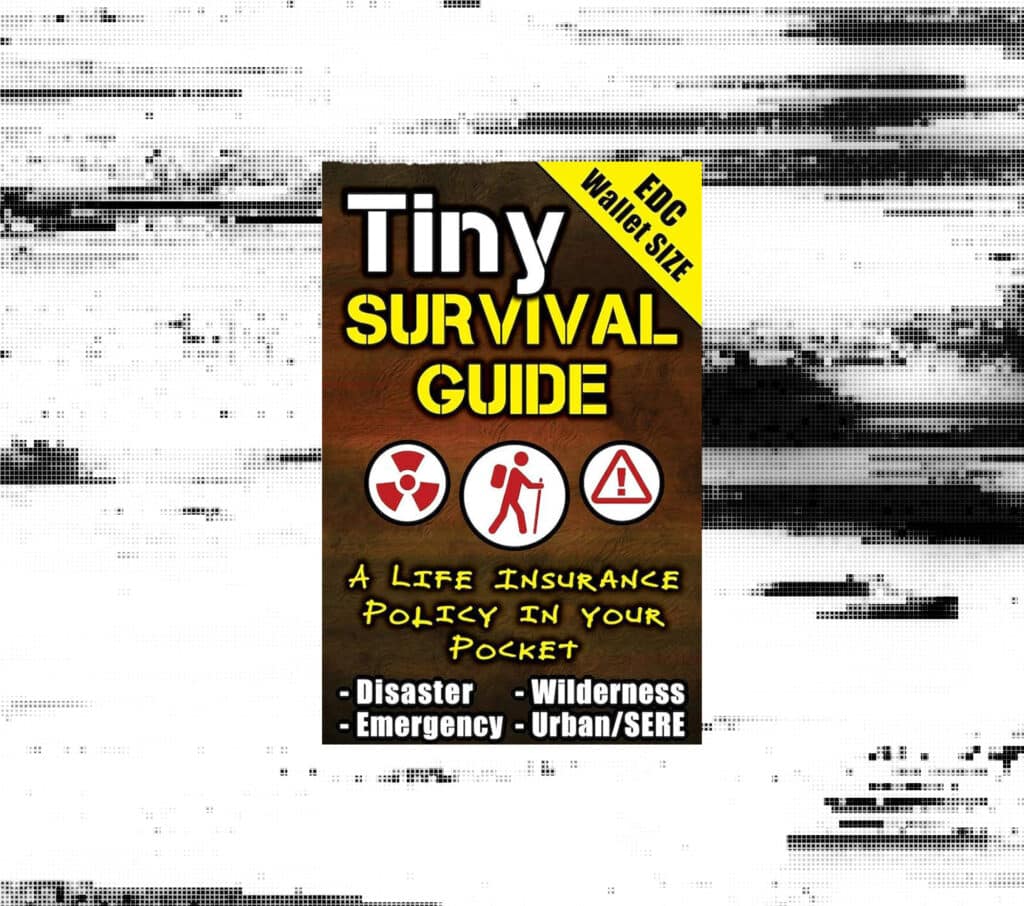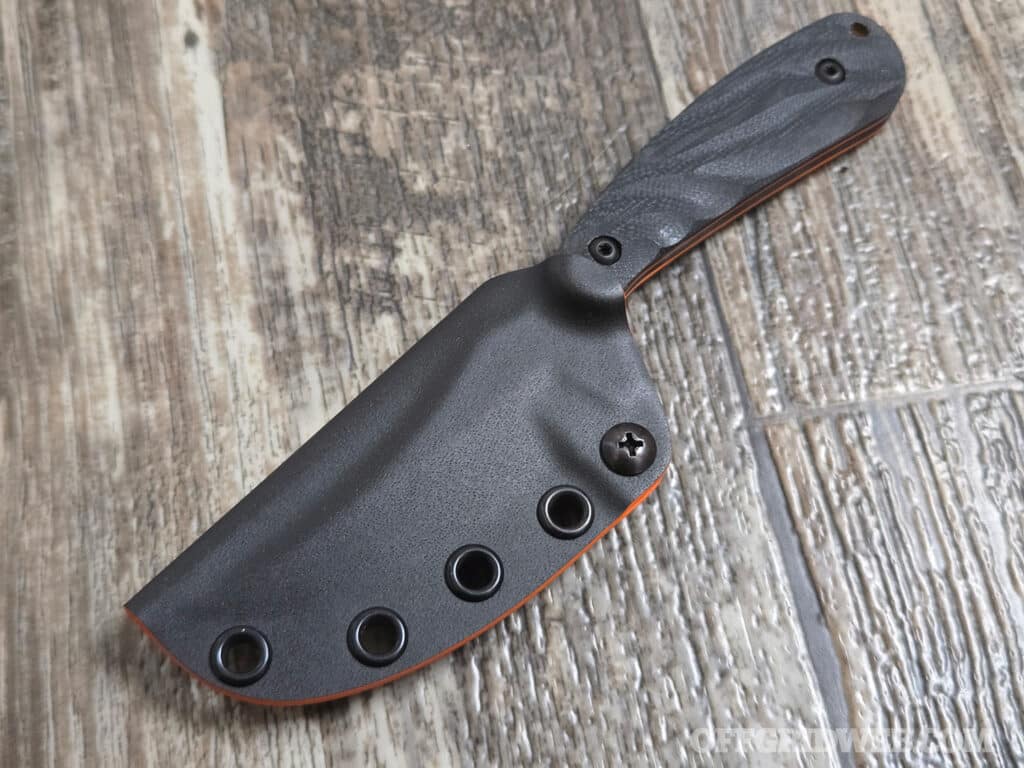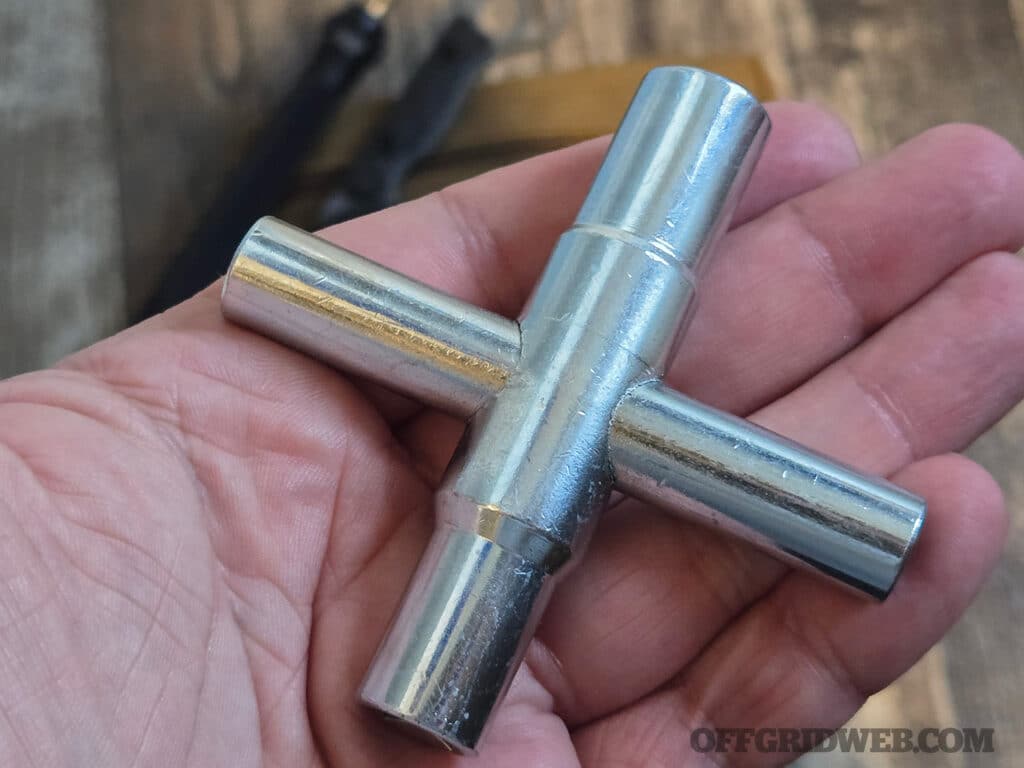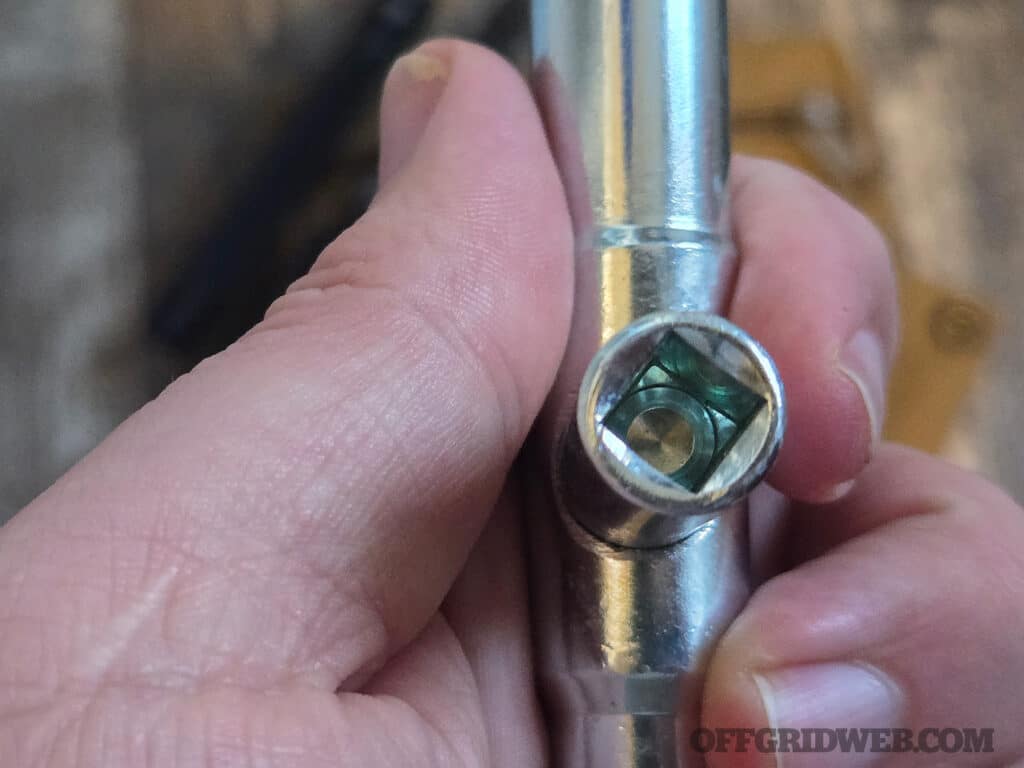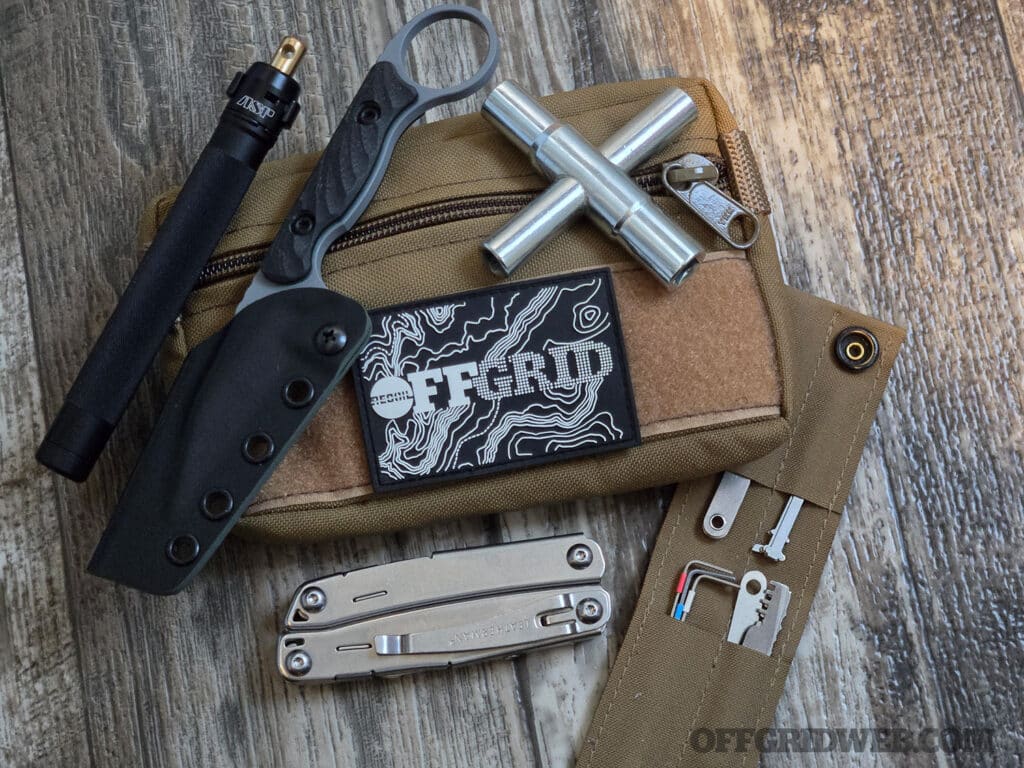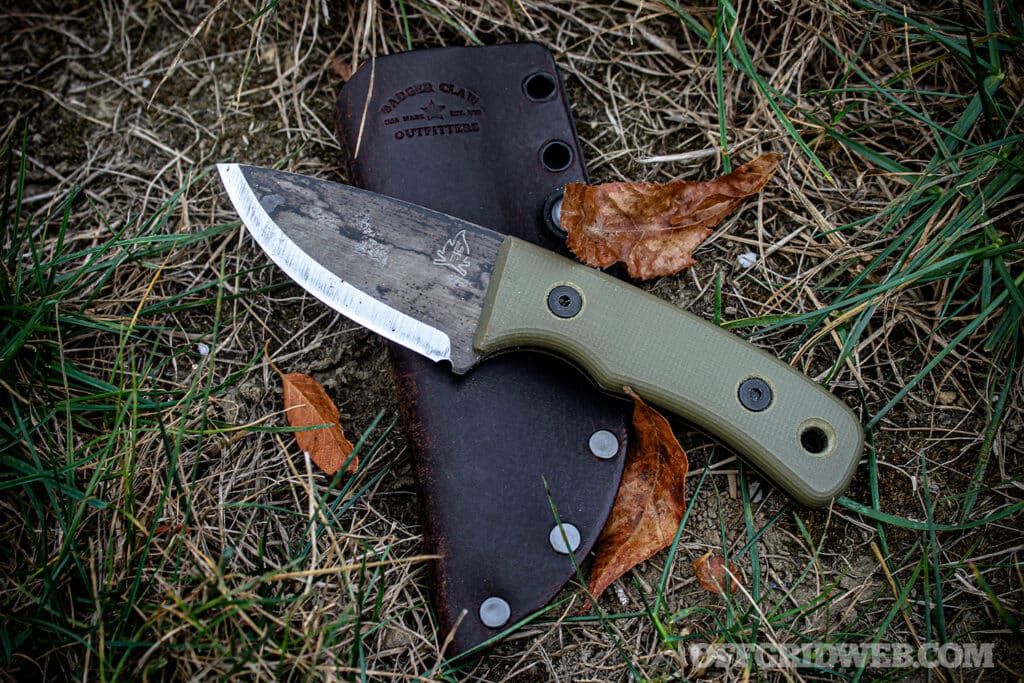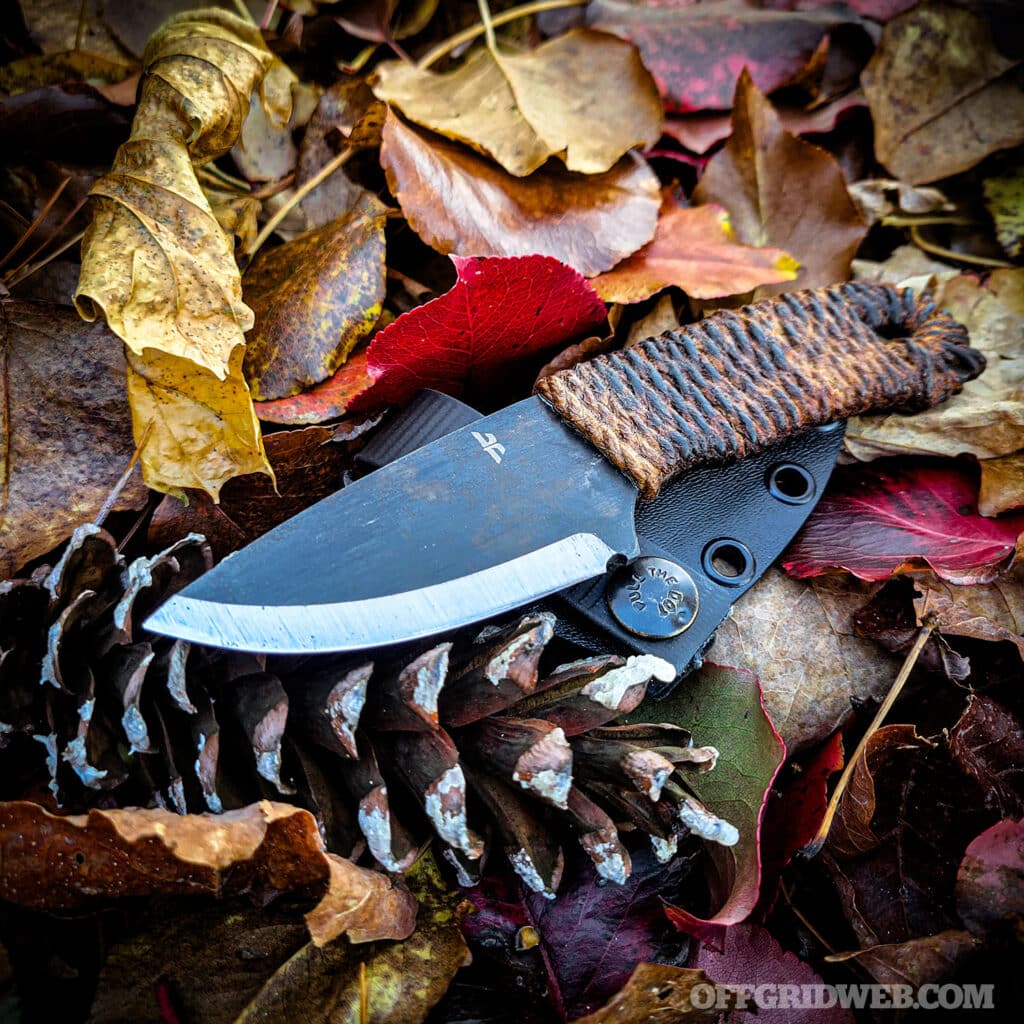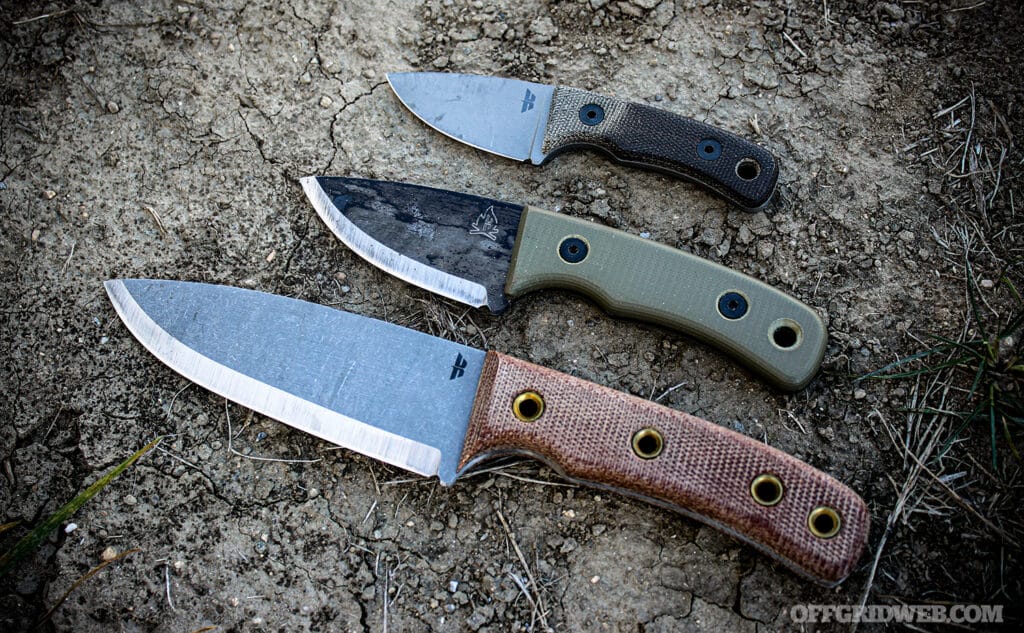In This Article
- What is a Gray Man?
- The Space Problem
- Challenges Women Face
- Choosing Urban Survival Clothing
- Urban EDC Survival Gear
- Choosing Survival Gear
- On-Body Urban EDC Gear Breakdown
- Self-Defense
- Utility Tools
- Electronics
- Medical
- Storage and Outerwear
- What’s in the Urban EDC Bag?
- Final Thoughts
- Read More From Issue 67
- Check Out The Gear Used in the Article
Surviving the wilderness requires skill and reliable gear. The same can be said when facing emergency situations in an urban environment, but there’s one variable that we won’t often find in the wilderness — people, and a lot of them. Emergencies in the urban jungle can be caused by weather events, infrastructure failure, and civil unrest. In all these situations, having skills and survival gear can help keep us safe, but carrying a larger wilderness survival kit in an urban environment would draw some unwanted attention that could lead to trouble. That’s why adopting the gray man aesthetic and applying that to our everyday carry (EDC) is the key to success.

The goal of adopting gray man principles is to be completely forgettable, just another guy on a cell phone.
What is a Gray Man?
“Gray man” is a term that means blending in with your environment, not standing out, and being forgettable to people passing by. While this term has been sensationalized by film and pop culture, the root of it is essential in urban survival. For example, walking through a busy city in camouflage, technical outdoor gear, and a MOLLE-covered pack loaded with pouches will make you stand out. Standing out must be avoided, but the key to adopting a gray man aesthetic and mentality is understanding that there’s no single, defined appearance for a gray man.
In a city or suburb, having a gray man aesthetic could be dressing in simple jeans and a T-shirt, sweatshirt, or jacket. A small pack, sling bag, or messenger bag would fit better with the large commuter communities often found in cities. The idea is to not draw attention or be memorable in any way, so clothing and packs should be free of logos and colors. Footwear should be plain as possible, as it is one of the most noticed and remembered clothing items on our bodies.
While that clothing might blend into a busy city, it would stand out on a beach where shorts, sandals, and Hawaiian shirts are the norm. The same applies to events where business attire is expected. The goal is to blend in and appear as just another face in the crowd.

While these Garmont boots and the camo pattern hat may be functional, the obvious military styling is very noticeable and memorable to the average person.
The Space Problem
Without a large pack or the numerous pockets found in technical outdoor and tactical clothing, carrying a comprehensive survival kit daily can be challenging — but not impossible. With the right clothing, outerwear, and bag choices, along with compact gear, assembling a highly functional, EDC-sized urban survival kit becomes much more manageable. While we may be tempted to select to most “tactical” styles for ease of movement and lots of storage space, colors like Multi-Cam, OD Green, Coyote Tan, and Wolf Gray will bring a quick end to your attempts to follow gray man principles.
Simple color choices are best when attempting to blend into an urban or suburban environment. Blue jeans or khaki-style pants tend to be typical of many people and a plain T-shirt won’t draw any attention. For outerwear, make sure you choose seasonably appropriate items, as nothing draws more attention than someone wearing a big heavy coat when it’s warm out. For the cooler months, a plain black shell-style jacket or a properly fit sweatshirt are a dime a dozen among crowded city streets. Fortunately, many tactical clothing brands offer a variety of discreet, practical options that make it easier to carry essential gear. However, when it comes to blending in, practical always outweighs tactical.
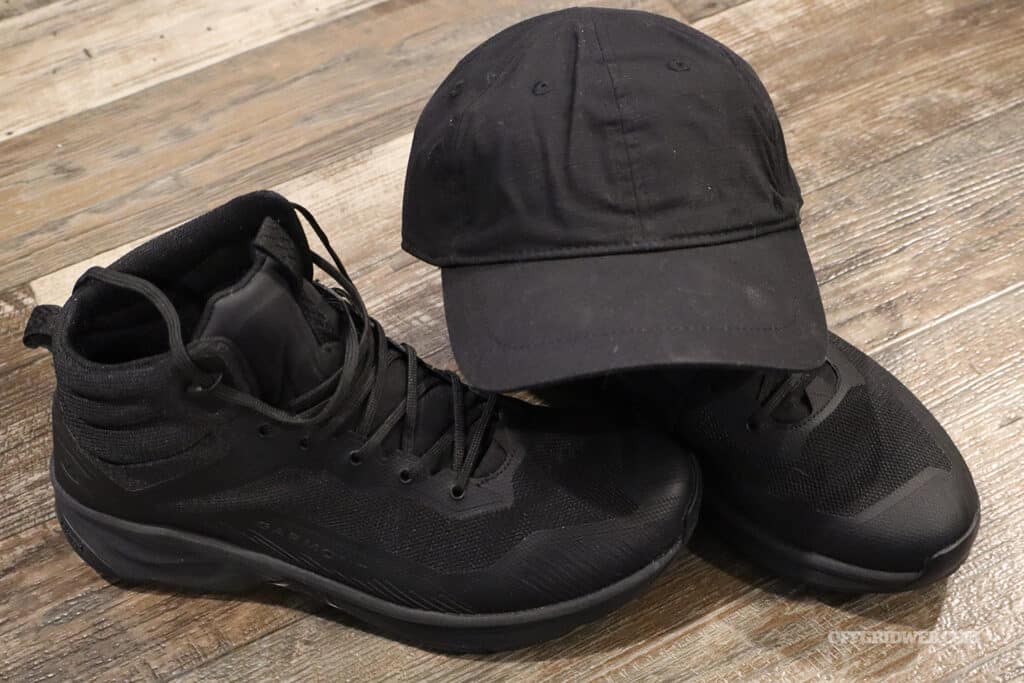
These Garmont boots deliver the same level of performance, while the plain Wazoo Cache cap adds even more functionality than the previous option. For those looking to blend in, this combination is a far superior choice.
Challenges Women Face
The space problem can be even more of a challenge for women. Typically, women’s clothing has little-to-no practical pocket space. While technical outdoor and tactical clothing affords women more pocket space, they will also stand out from the crowd. As a result, women often rely on a purse, bag, or pack as their primary means of carrying EDC gear, making it crucial to choose one that allows quick and easy access to essential items. Beyond the bag, compact items can be discreetly carried on the body, but due to the form-fitting nature of women’s clothing, extra care is needed to prevent gear from printing through the fabric.
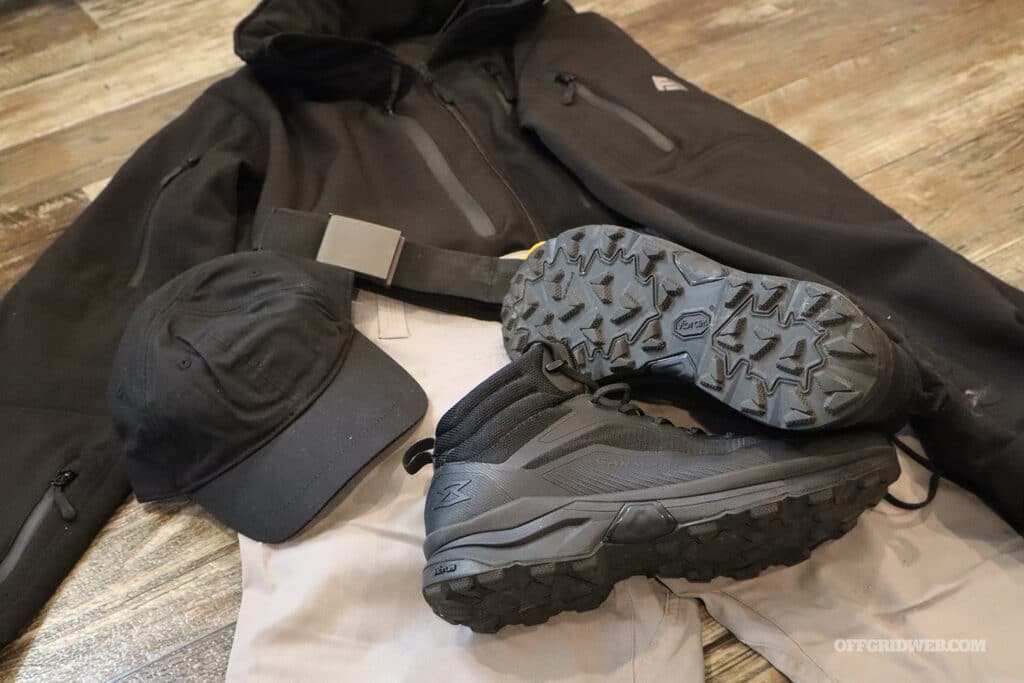
Ideally, clothing should be both functional and free of noticeable logos, patterns, and color.
Choosing Urban Survival Clothing
Remember these guidelines when picking discreet clothing:
- Situationally Appropriate: Outerwear should match an urban environment. Camo and other military-styled clothing and colorways will make you stand out. Keep your clothing style simple and avoid flashy colors.
- Keep Accessories Minimal: Survival gear isn’t the only thing that stands out. Flashy jewelry and watches draw people’s eyes and can even make you a target for criminals. Large logos on hats and brightly colored footwear are also things that can stand out and draw unwanted attention.
- The Fit Matters: Clothing should fit appropriately. Overly baggy clothing can draw as much attention as form fitting or revealing clothing.
- Bags and Packs: While we all love our technical and tactical bags, these are not the best choice when blending in. However, keeping a simple backpack, sling, messenger bag or purse won’t draw much attention.
Urban EDC Survival Gear
Though the environments differ greatly, the core principles of urban and wilderness survival remain largely the same. We must secure access to food and water, find shelter from the elements, and have a way to navigate. Equally important are the ability to defend ourselves, communicate with others, and provide medical care when needed. When choosing gear, keep in mind that, unlike wilderness emergencies where you may be stranded for an extended period, urban EDC survival kits should prioritize getting you back home or to a secure location where a more comprehensive survival kit awaits.
Choosing Survival Gear
When selecting gear for discreet carry, there are a few guidelines to follow:
- Compact: When applying gray man principles, large, conspicuous tools can quickly give you away. Compact-yet-reliable tools provide an advantage in emergencies or survival situations. While they may not be as robust as the gear you keep at home or take into the wilderness, they should be capable of bridging the gap to your larger, more functional equipment.
- Concealable: Having clearly visible gear will quickly make us noticeable and notable to a passerby. Your gear should be out of sight and should not “print” through your clothing.
- Multi-Purpose: Each piece of equipment should fulfill multiple roles or functions. This cuts down on both bulk and weight, making it easier to move quickly in high-stress situations.
- Applicable to the Location/Environment: While we all love gear, some wilderness survival tools are irrelevant to urban environments. Stick to the things you are most likely to use.
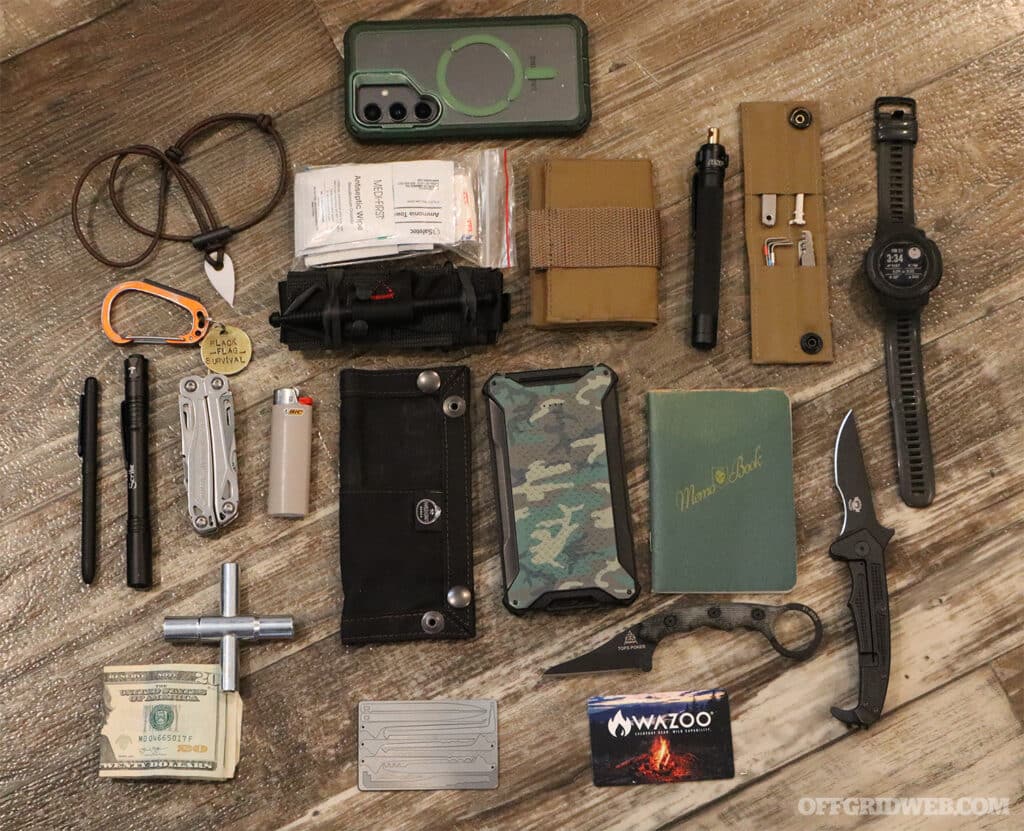
This EDC kit is designed to be both practical for everyday use and invaluable in emergencies. With thoughtful planning, all of this gear can be carried comfortably and discreetly.
On-Body Urban EDC Gear Breakdown
Let’s take a closer look at the individual components of my urban survival EDC kit. While everyone’s needs will vary based on personal circumstances, skill set, and environment, this can serve as a solid starting point for building your own kit. Since on-body gear must be more compact than what fits in a bag, careful selection is important. However, there are many situations where you could become separated from your bag. Keeping essential survival tools on your person ensures you’ll still have access to critical, potentially life-saving equipment when it matters most.
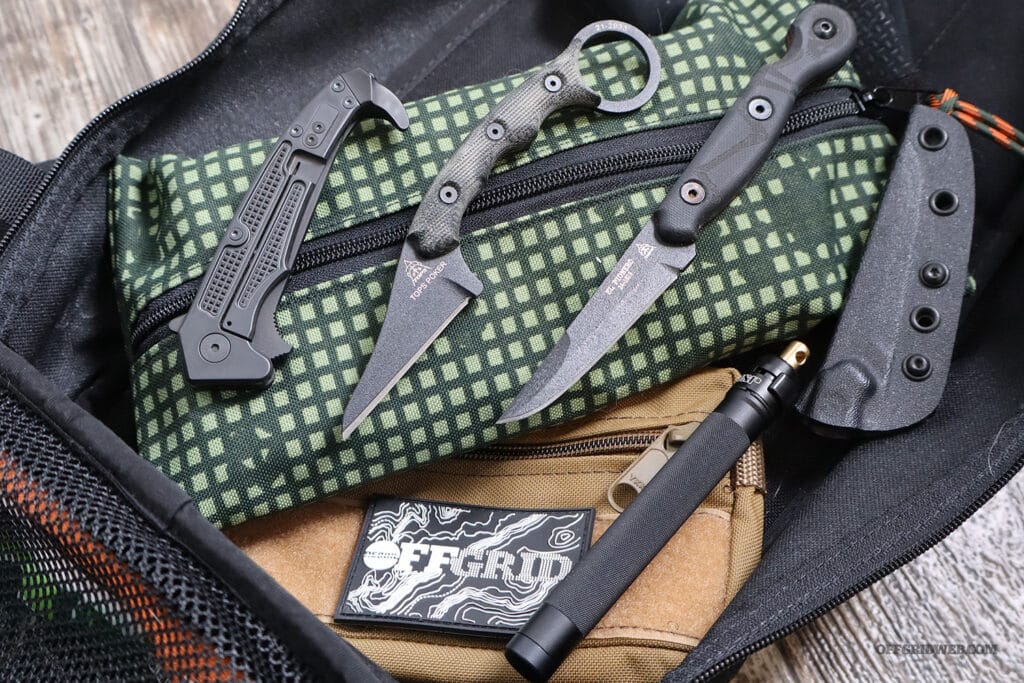
Carrying self-defense tools like the TOPS Poker or El Pionero, ASP OC Spray, and the Skallywag Tactical MDV Folder require training and practice to be used effectively.
Self-Defense
The need for self-defense is a reality we must acknowledge in uncertain times. Effectively protecting yourself depends on several factors.
Physical Fitness: Maintaining a basic level of fitness enables quicker reactions and greater endurance. The best defense is avoiding danger altogether, and the ability to run, climb obstacles, and keep moving over long distances can be crucial for survival in a bad situation.
Training: Training in martial arts and self-defense tools is essential when facing a potential confrontation. Martial skills improve situational awareness and can potentially diffuse a threatening situation before it arises.
Equipment: No matter what self-defense tools you choose to carry, regular practice is essential. Your equipment should be reliable, well-maintained, and ready for immediate use.
Urban environments often come with stricter regulations on self-defense gear. Given these limitations, I carry a selection of items tailored to the situation.
ASP Defender: The Defender series of pepper spray is available in two sizes and comes in either polymer or aerospace aluminum. Its unique design allows it to be gripped and deployed similarly to a flashlight, making it easy to use from a defensive stance. The canisters contain 1.4-percent major capsaicinoids — one of the highest concentrations on the market — causing intense eye and skin irritation. Additionally, a UV dye helps law enforcement identify attackers later. The full-sized D1 Defender can also double as a striking tool, making it a versatile option for non-lethal self-defense.
TOPS Poker or TOPS El Pionero: These compact fixed blades offer discreet carry while remaining highly functional for cutting or last-ditch defense. The Poker features a 2.5-inch straight blade with a reinforced tip for puncturing and a finger ring for enhanced grip. Ideal for those trained in Martial Blade Concepts, its short length makes it legal in most areas. The El Pionero, at 3.13 inches, resembles a paring knife and was designed with Ed Calderon to provide superior control in high-stress situations. Both knives are solid choices for trained users, with blade length being the key deciding factor.
Skallywag Tactical MDV Folder: Unlike most folding knives designed for utility, the MDV is built for self-defense. A compact version of the MDV fixed blade, it retains combat-ready functionality in a pocket-friendly design. Made from D2 tool steel, it’s built to withstand high-stress situations. The reversed frame lock suits left-handed users but was designed as an off-hand tool for weapon retention. A bird’s beak handle frame ensures a secure grip, while an integrated impact bearing allows for glass breaking. For quick deployment, the MDV features both a flipper tab and a pocket-catch mechanism for rapid access on the draw.
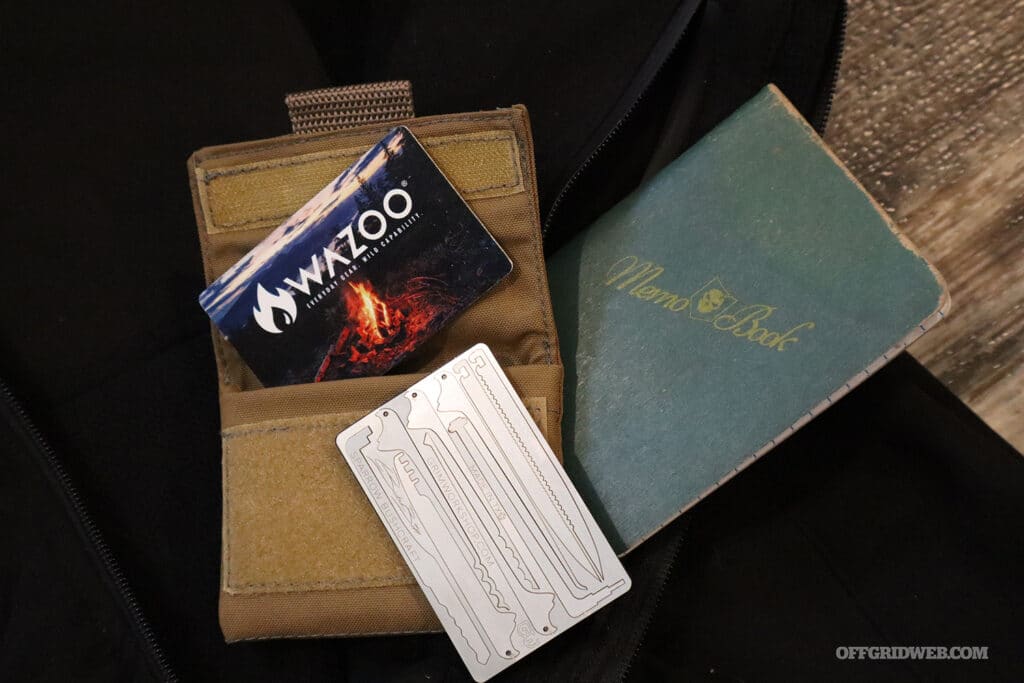
The Badger Claw Sidekick has plenty of storage for your typical daily necessities and some slim survival tools.
Utility Tools
Adding the right tools to your urban survival EDC not only simplifies daily tasks but becomes invaluable in emergencies. The tools below can help secure shelter, collect water, start a fire, and more — but like any tool, they’re only effective if you know how to use them. Without practice and training, they’re just extra weight.
Tuff Possum Entry Kit: This compact kit includes a range of lock-picking and bypass tools designed to grant access to essential resources or shelter in an emergency. It can also be invaluable for gaining egress through locked doors or gates when the situation demands it.
Grim Workshop Survival Cards: Thin and easy to carry, these valuable cards provide an easy and discreet way to carry survival tools and backups to essentials tools that can be lost or damaged during high stress scenarios.
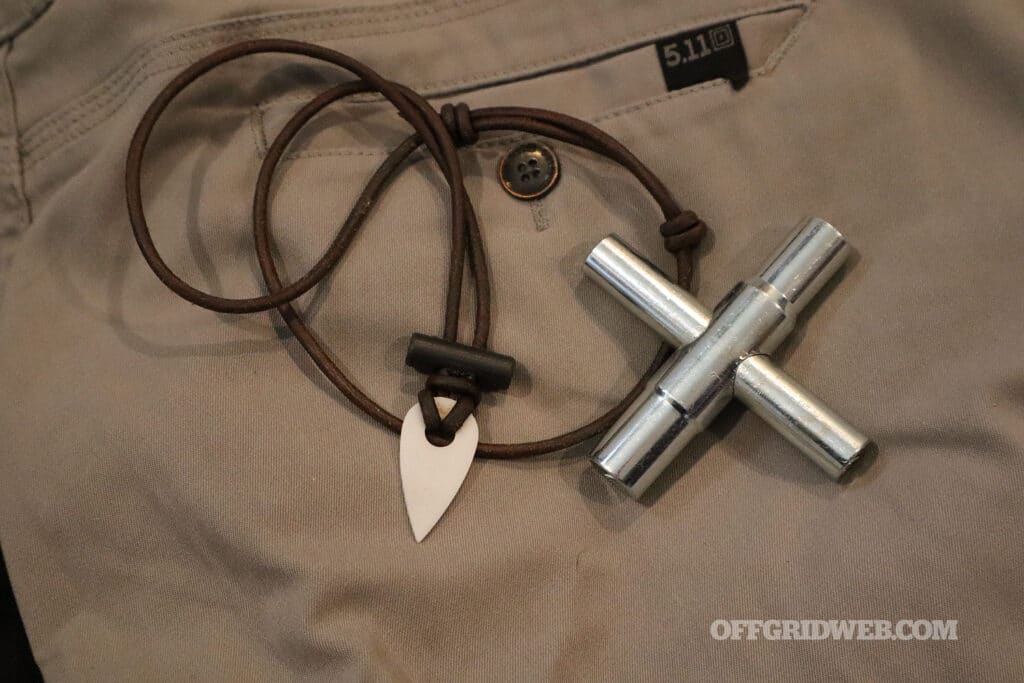
Creating fire and having clean water is just as important in urban settings as it is in the wilderness.
BIC Lighter, Wazoo Spark, and Wazoo Fire Card: Fire isn’t just for the woods — it’s essential in urban survival too, providing warmth, cooking, and signaling. A lighter is the easiest fire-starting tool, but backups matter. The Wazoo Spark necklace features a ferrocerium rod and ceramic striker, paired with a fire card for quick ignition. The striker also doubles as a glass breaker and light prying tool in emergencies.
Leatherman Sidekick: When you can’t carry an entire toolbox, a high-quality multi-tool can cover a lot of bases in both everyday life and during an emergency.
Silcock Key: Many people overlook this essential tool in urban environments. Designed to operate various-sized water valves, it can provide access to water when faucets or spigots aren’t available. In cities and suburban areas, many buildings have external water connections, and a silcock key allows you to tap into them for clean drinking water when needed.
Skillcraft Aviator Pen: A good pen/pencil has so many uses. In our everyday life a pen is something we often find ourselves looking for. In an emergency, a writing tool allows us to take notes and leave messages for others. The Skillcraft Aviator has both pen and pencil insert and a sleek thin body for easy carry.
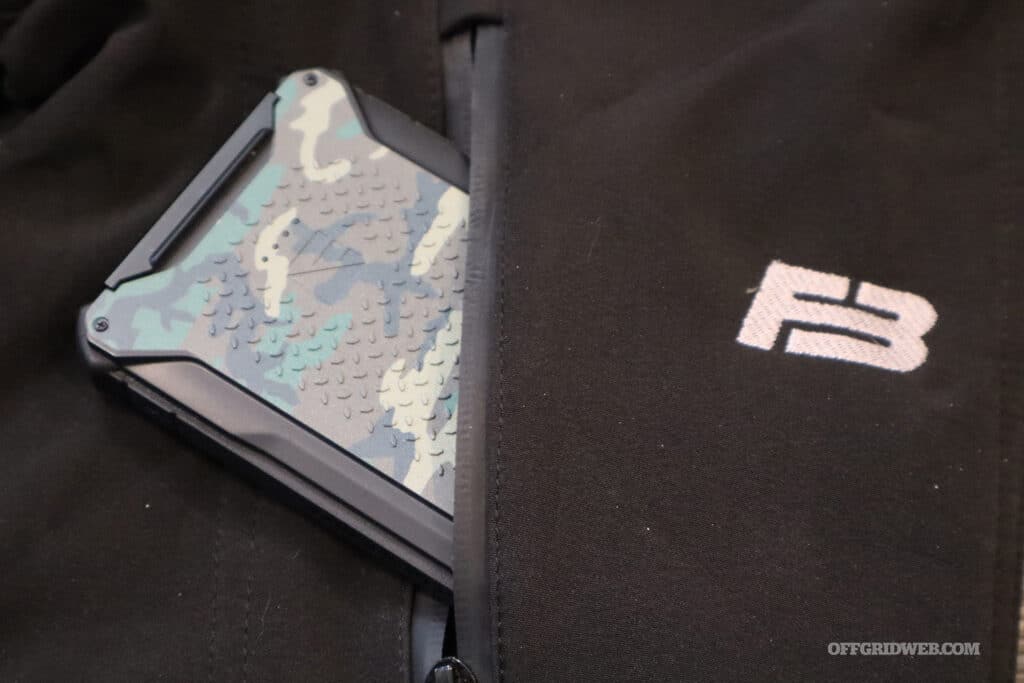
With our heavy reliance on electronic devices, backup power like this Dark Energy Poseidon Pro will keep your devices charged up for an extra day.
Electronics
Electronics are an integral part of daily life and can be invaluable in emergencies. While power is a concern, strategic planning ensures your devices stay operational until you reach a safe place to recharge. Regular maintenance, including battery checks and functionality tests, is essential to keep them ready when needed.
ASP Scribe Flashlight: A reliable flashlight is essential for both daily tasks and emergencies, from retrieving a dropped item at night to navigating a blackout. It can also serve as a signaling tool or momentarily disorient an attacker. The ASP Scribe is a compact, rechargeable pen-style light delivering 400 lumens with multiple modes and 1.5 hours of runtime. Its durable, weather-resistant body ensures reliability when it matters most.
Garmin Instinct 2 Watch: The Garmin Instinct 2 is built for adventure, featuring a lightweight, durable polymer case, onboard navigation, and body monitoring tools. With up to 30 days of battery life (or virtually unlimited with solar charging), it’s a reliable timepiece. Its compass and navigation tools help you navigate obstacles in urban environments with ease.
Dark Energy Poseidon Pro Power Bank: All these electronics will need a charge if we’re away from a power source for some time. The Dark Energy Poseidon Pro provides enough power to fully charge all these devices while remaining compact and weather resistant.
Cell Phone: While there are many downsides to relying on our cell phones. Having access to navigation tools, communication, and virtually the entirety of human knowledge at our fingertips does have its benefits in an emergency.
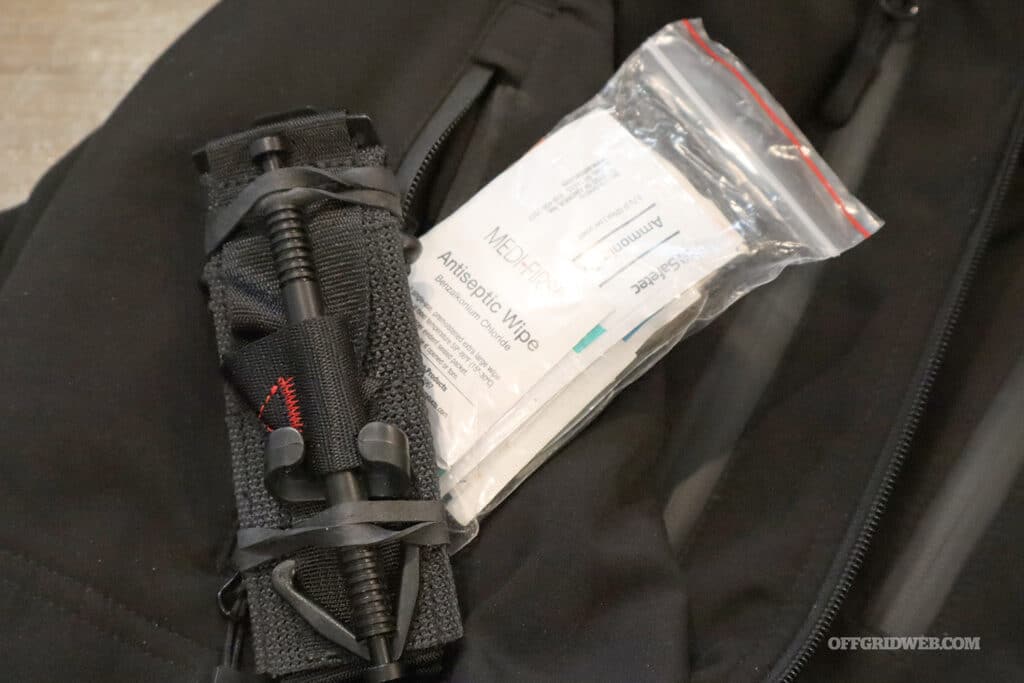
Even if you can’t carry a full-sized trauma kit, basic first aid and bleeding control can make or break us in an emergency.
Medical
Discreetly carrying a full trauma kit on your body is challenging, but it’s crucial to be prepared for both minor injuries that can slow you down and major bleeding that could be life-threatening. Beyond having the right gear, even basic first aid training provides a significant advantage in an emergency.
Compact Med Kit: Adding a A simple first aid kit to your urban EDC kit to handle cuts, scrapes, burns, skin irritations, dehydration, aches, and allergies can keep us moving and prevent minor injuries and ailments from slowing us down.
Bleeding Control: Bleeding injuries that cannot be controlled is one of the fastest ways to leave this world. Having some bleeding control options like hemostatic agents and a pressure bandage won’t add much weight or bulk and could save your life.
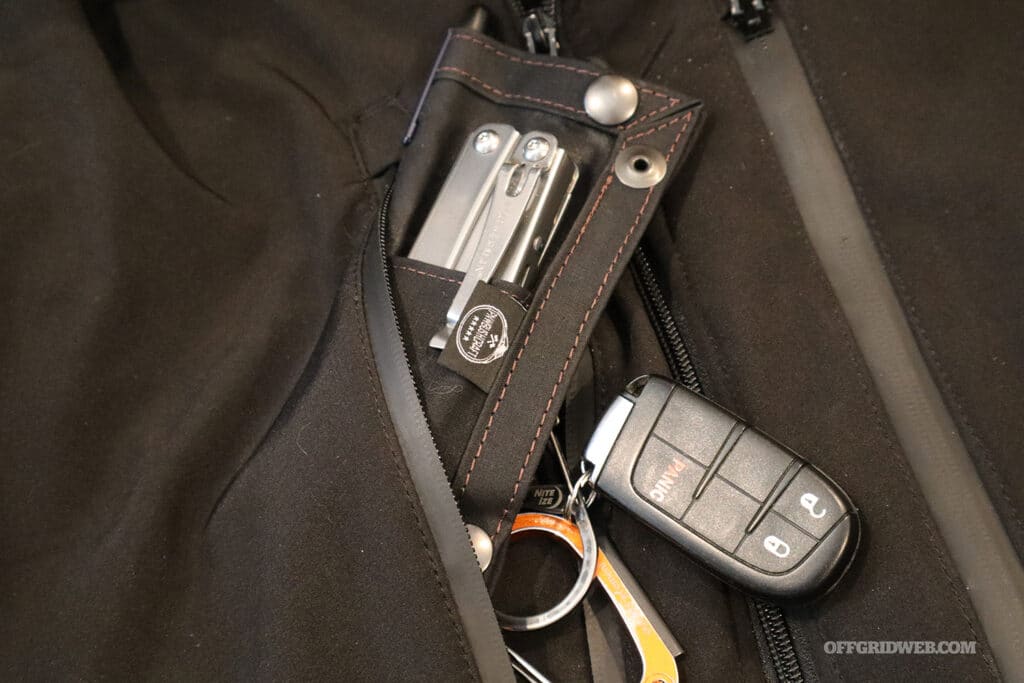
PNWBushcraft’s EDC Travel Tray is ideal for organizing essential tools.
Storage and Outerwear
If you’ve gone through this list and thought, that’s a lot of gear! — you’re not wrong. Since each item is designed to be compact and lightweight, staying organized is crucial, especially in high-stress situations. Knowing exactly where your gear is and accessing it quickly can save valuable time and prevent confusion when it matters most.
221B Tactical Tradecraft Jacket: The Tradecraft is a sleek, black shell jacket with a subtle, low-profile logo designed to blend in effortlessly. Its versatile design allows it to be worn over layers in cold weather or as a stand-alone in cooler temperatures or rain. With 10 pockets for gear storage and compartments for soft bullet-resistant armor, it offers both functionality and added protection for vital areas.
PNWBushcraft EDC Organizer Tray: Keeping tools organized is essential, and the organizer tray offers dedicated pockets to prevent gear from shifting or rattling in your pockets. As a bonus, it converts into a small tray, providing a versatile surface for both everyday use and emergency situations.
Badger Claw Outfitters Sidekick Wallet: This simple nylon wallet features two internal pockets and hook-and-loop closure. The inside is large enough to store your ID and cards as well as small tools if needed.
Wazoo Cache Cap: The cache cap offers ample storage for small tools, cash, and anything you might not want in your pockets. The inside features a bright orange liner with reflective strips that can be used as a signaling device.
Garmont Tactical 9.81 Alert Boots: These mid-height boots have the sleek look of a sneaker while packing serious performance. Their all-black, low-profile design keeps them discreet, yet they’re loaded with essential features. Lightweight construction allows for quick, quiet movement, while reinforced high-impact areas provide added foot protection. The Vibram outsoles and aggressive lug pattern deliver exceptional grip on wet and slippery surfaces, making them ideal for scaling fences and navigating obstacles.
What’s in the Urban EDC Bag?
With all this gear stored on our body, what do we need a bag for? While my on-body kit is designed to stand alone, there are still many benefits to having a small bag or pack:
- A pack can be used to carry any found, foraged, or salvaged items in an emergency.
- Allows for the inclusion of larger tools and redundancy items from the on-body urban survival kit
- Allows for the addition of food and water resources
- A small pack can be used to store items or resources, and hidden at a specific location for later retrieval.
- In a case where you can’t wear a jacket or are in low storage clothing, a bag can carry the bulk of your urban survival gear.
Final Thoughts
The gray man concept has been dramatized by movies and popular media, but its core principles remain invaluable for urban preparedness. While those with a preparedness mindset understand the importance of carrying essential gear for safety, others may perceive it as a threat — or even a target for theft. Adapting your EDC into a discreet-yet-functional survival kit can be challenging, but with careful planning, it can be both practical and lifesaving.
Read More From Issue 67
Don’t miss essential survival insights—sign up for Recoil Offgrid’s free newsletter today!
- Editor’s Letter Issue 67
- Review of the Tiny Survival Guide 2.0
- Offgrid Adventures: South Africa to Hawaii
Check out our other publications on the web: Recoil | Gun Digest | Blade | RecoilTV | RECOILtv (YouTube)
Editor’s Note: This article has been modified from its original version for the web.

